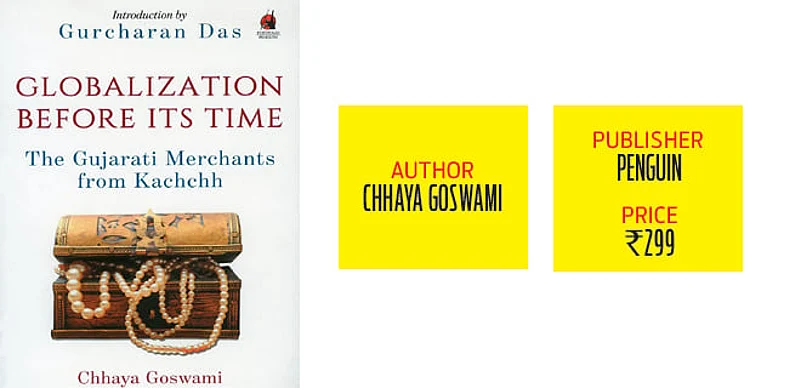We all have seen that ad series by Gujarat Tourism, featuring megastar Amitabh Bachchan, showing the beautiful landscape of the state. One such advertisement also shows the vast expanse of Kachchh region and the breathtaking sunrise there. But there is more to the Kachchh region than just that. A great history in maritime trade is one of it. Long before Mumbai gained prominence as the financial and trade hub of the country, it was Kachchi traders in the 18th and 19th century that brought maritime glory to the Indian trade and developed sea routes to Muscat, Zanjibar and other countries in west Asia. It is this trade relationship that is the focus of ‘Globalization before its time’, written by Chhaya Goswami, a historian and a Kachchi herself.
The title seems apt too, as one can easily be mistaken for believing that the enterprising nature of today’s Indian businessmen who have gone on acquiring spree overseas is of recent vintage. The book is divided into four parts, with the first one talking about the importance of Mandvi port and the beginning of the shipbuilding activity in Kutch to facilitate trade by sea. And also how the Jadejas, the ruling dynasty of the time, had no disdain towards trade like other Rajputs kingdoms across the country. Here the trade was not held by the mercantile community; the ruling class itself was at the forefront of it.
The book then moves to its second part which features Kachchi traders operating in Muscat and Oman, and later moving to Zanjibar in the third part. The book also sheds light on the social and trading practices of the time and also how participation in some occupation depended on one’s religion; such as Hindu traders abstaining from participation in meat trade and refraining from taking their womenfolk with them to the region. The last part deals with how these traders also became financiers for the orderly function of the state in the late 19th century.
This book is at a time a chronicler of historical events and also economic developments of the era. In-depth research has gone into finding out the trade practices and the terminology of various transactions. But since most find history as a boring subject, it is necessary to weave a sort of tale through the pages to keep the reader hooked. Sadly, this is missing here. No doubt the information provided is of highest quality but the sheer scale of information might overwhelm some readers who may struggle to remember various events. All in all, a great effort considering so less is known about the trade practices of the Kachchh region.













